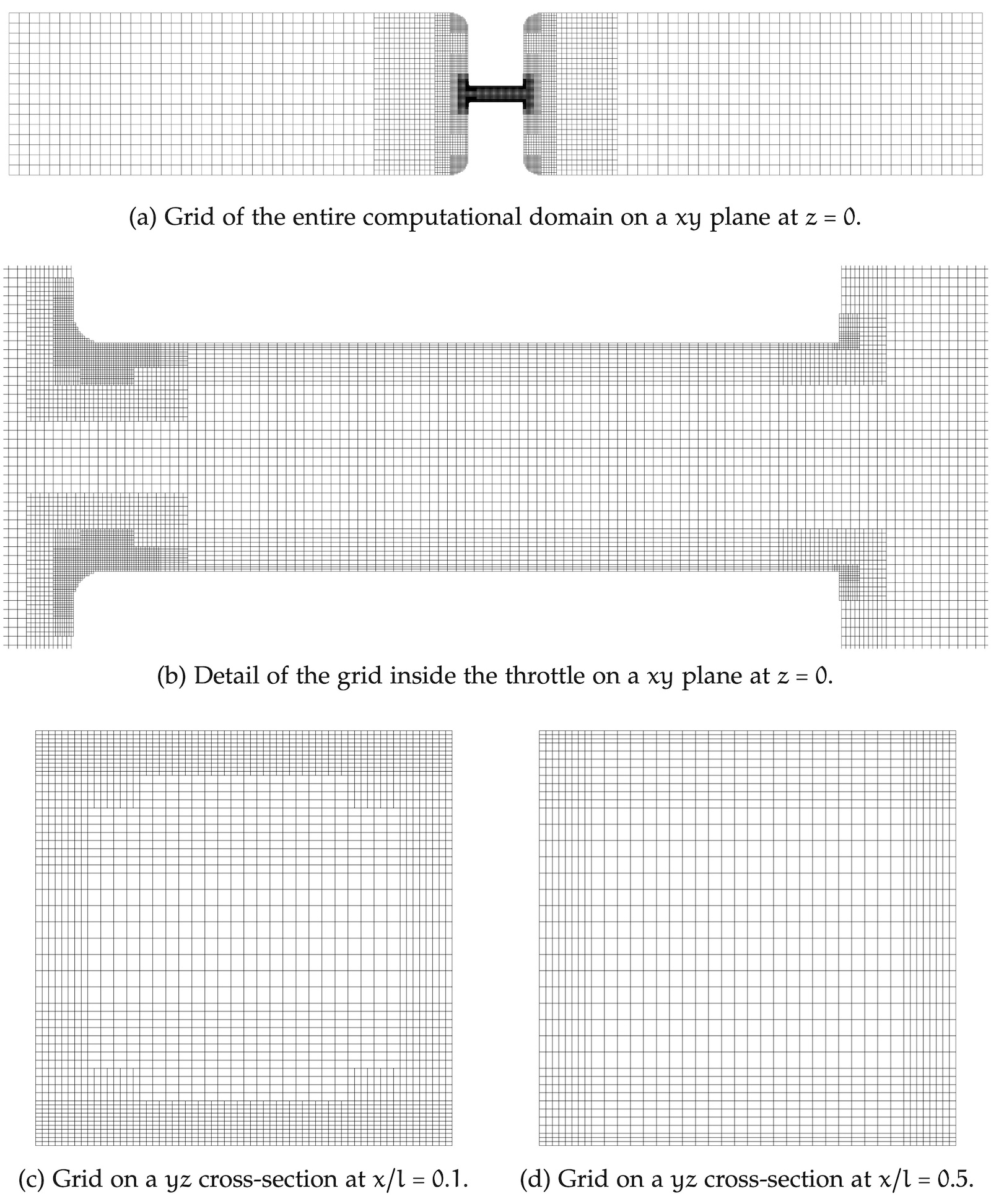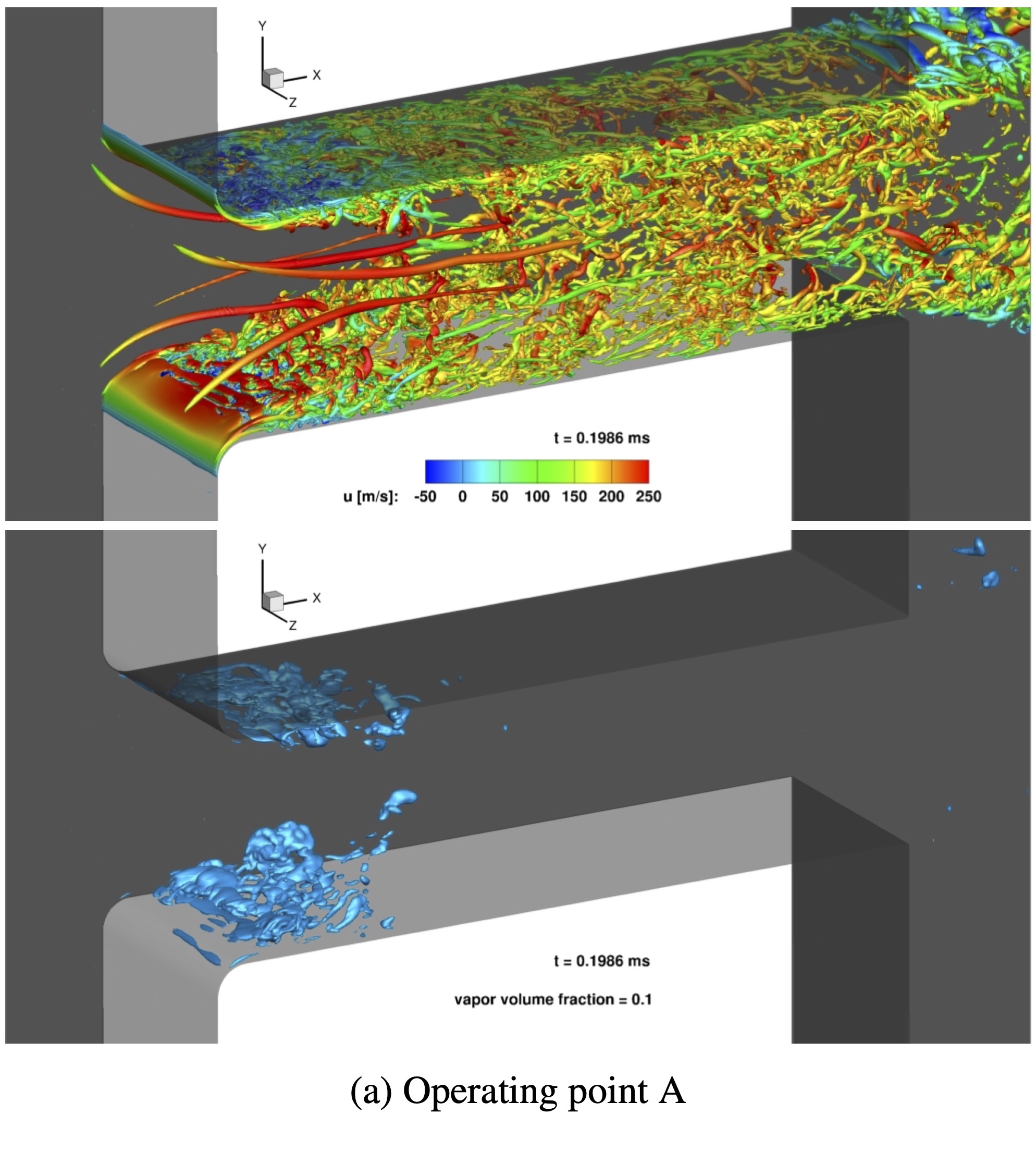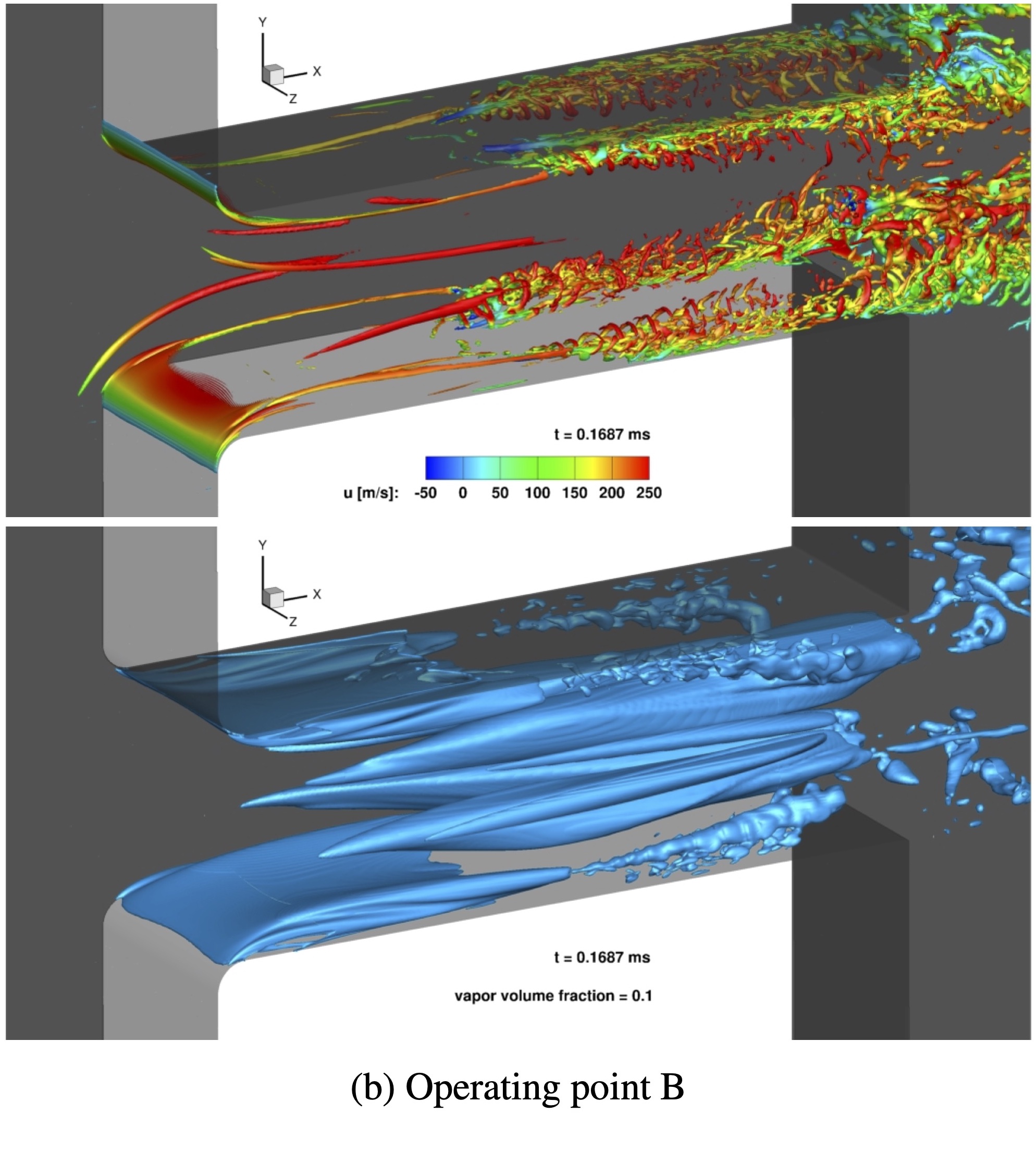C.P. Egerer, S. Hickel, S.J. Schmidt, N.A. Adams (2014)
Physics of Fluids 26, 085102. doi: 10.1063/1.4891325
Large-eddy simulations (LES) of cavitating flow of a Diesel-fuel-like fluid in a generic throttle geometry are presented. Two-phase regions are modeled by a parameter-free thermodynamic equilibrium mixture model, and compressibility of the liquid and the liquid-vapor mixture is taken into account. The Adaptive Local Deconvolution Method (ALDM), adapted for cavitating flows, is employed for discretizing the convective terms of the Navier-Stokes equations for the homogeneous mixture.
ALDM is a finite-volume-based implicit LES approach that merges physically motivated turbulence modeling and numerical discretization. Validation of the numerical method is performed for a cavitating turbulent mixing layer. Comparisons with experimental data of the throttle flow at two different operating conditions are presented. The LES with the employed cavitation modeling predicts relevant flow and cavitation features accurately within the uncertainty range of the experiment. The turbulence structure of the flow is further analyzed with an emphasis on the interaction between cavitation and coherent motion, and on the statistically averaged-flow evolution.


Instantaneous snapshots of the flow field in the throttle valve: λ2 iso-surfaces colored by the streamwise velocity (top picture) and corresponding cavitation structures visualized by a vapor volume fraction of 10 % (bottom picture) for operating point A.

